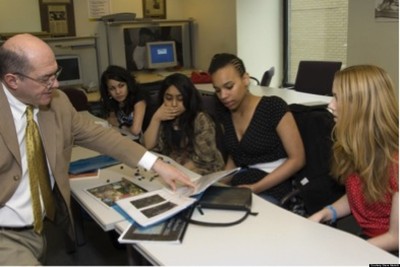Got a wonderful idea you know will change the world for the better? Fantastic! But to get any idea off the ground, you need one thing: money.
I founded the nonprofit Network for Teaching Entrepreneurship (NFTE) in 1982 on a public high school teacher’s salary. I’ve been chewed out, laughed at and shown the door by potential donors. I’ve also succeeded in fundraising beyond my wildest dreams.
Today NFTE’s annual budget is roughly $20 million. I’ve been fundraising for thirty years and have built teams that have raised over $100 million, enabling NFTE to provide entrepreneurship education to over 600,000 at-risk youth around the world.

Here are seven tips I use all the time that will help you become an incredibly effective fundraiser. Use them to get your idea up and running.
- Define Your Unit of Change.
People who donate money want to see measurable results. To provide this, you must be able to define and clearly explain your Unit of Change. Let’s say you want to start a program that teaches teenage girls to code. Your Unit of Change could be “each girl will learn to code her own basic app.” How much will it cost to deliver that result? You need to know that, too. - Write Down and Memorize Your Vision, Mission, Competitive Advantage and Positioning Statement.
Express each of these items in one sentence, so that in four sentences you can pitch a potential donor at a party at the drop of a hat.- Your vision is how you want the world to be.
- Your mission is what you are doing to bring your vision to life.
- Your competitive advantage is the one thing your organization can do better than any of your competitors.
- Your positioning statement explains clearly how you intend to make your vision a reality by fulfilling your mission using your competitive advantage.
- Research Donors and Investors Who Are Already Active in Your Field
To find potential donors and investors, comb through the “Foundation Directory” to research who is interested in, for example, improving tech education for girls. You can also use Google Search to find the latest news on research, projects, and conferences related to your field. The more research you do, the more money you will raise. - Spend Time (and Money) on the Social Circuit.
It is usually the wealthiest people in your community who control the local foundations and can help you achieve your aims. Find out where they socialize. That’s where you need to be. In every community there are clubs, associations and boards that host dinners and events in support of various charitable goals. Try to attend one of these events every month, regardless of the cost. You’ll make friends and meet interesting people. And you are likely to raise back the money you have spent by a factor of ten.
Before attending an event, research who will be there and practice your 30-second “elevator pitch.” Being able to give a polished 30-second summary of your vision, mission, competitive advantage and positioning statement will help you secure a meeting with a potential donor. Out of every ten introductions and elevator pitches, you can expect two meetings and one donation. Over years, this practice can lead to millions of dollars in support of your mission. - Make Friends with Potential Investors and Donors.
Fundraising is really friendship-building. I learned this in 1987 from one of the greatest social enterprise executives of all time, Mike Caslin. Mike and I worked closely together during NFTE’s early days and he is now Managing Director for Development and Growth Strategy at Rising Tide Capital, one of my favorite organizations. Mike told me something incredibly important when I first started out. He said: “Steve, fundraising is really just communicating with your friends.”
I will never forget that, and can say that every major partnership that I’ve built since has been based in sincere friendship. Be genuinely interested in everyone you meet and you will never feel intimidated, even by the richest or most powerful person. Be a good listener–the less you say, the more money you will raise, to be honest. People respect you more and view you differently when they can feel that you genuinely care about them and what they have to say. Make friends first, and only ask for help after you’ve established a real and honest connection. - Make Your Pitch Simple and Clear – and Put It In a One-Pager.
Once you land your first meeting, you’ll need a one-pager. This is a simple one-page letter explaining your mission and how you intend to execute it. Include two charts–a bar chart showing how much money you are trying to raise and how much you have raised so far, and a chart illustrating your Unit of Change. Your potential donor will be able to quickly grasp your concept, and then turn the page over to see your Unit of Change and how close you are to your fundraising goal. - Manage Your Moves.
Use a Moves Chart to track your fundraising efforts. The Moves Chart tracks the series of actions or “moves” you need to make to obtain a commitment from a prospective donor. You can set one up yourself or find a Moves Chart template online. Here’s how I do it:
The ability to raise money is directly correlated to your ability to do good. Learn how to fundraise and you will achieve miracles, and empower not only yourself but others around you. Good luck, and let me know how it goes!
